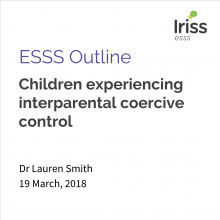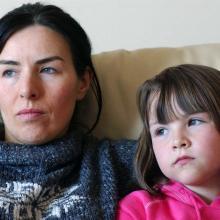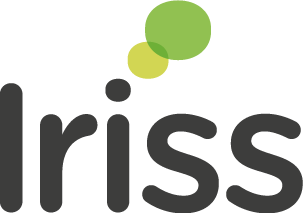Summary
This Outline explores good practice approaches to investigating child sexual abuse that may minimise harm or distress to the child (and non-abusing parent). It draws on Serious Case Reviews, academic literature and online resources from key organisations, providing links to examples of good practice and brief outlines of relevant content within the sources.
Introduction
This Outline addresses the following question: What are some good practice approaches to investigating child sexual abuse that may minimise harm or distress to the child (and non-abusing parent)?
About the evidence presented below
We undertook a structured and systematic search of the literature, identifying whether systematic reviews had been conducted in the area identifying best practice principles for investigating child sexual abuse, or whether guidelines had been produced by key organisations (e.g. NICE). We searched for relevant Serious Case Reviews including recommendations for good practice relevant to the topic. The nature of SCRs is such that recommendations usually emerge from examples of poor practice, but they do identify ways social workers could improve approaches. We searched academic subject databases related to social care to identify evidence reporting best practice and identified examples providing specific recommendations based on social workers’ experiences and evidence of improved outcomes. We identified key publications online from authorities and organisations working in the area.
The resources provided below have not all been subject to formal academic peer review processes, but are viewed as examples of evidence-based best practice produced by experts in the field of child sexual abuse.
Accessing resources
Some of these materials linked to in this summary are published in academic journals and are only available with a subscription through The Knowledge Network with a NHSScotland OpenAthens username. The
Knowledge Network offers accounts to everyone who helps provide health and social care in Scotland in conjunction with the NHS and Scottish Local Authorities, including many in the third and independent sectors. You can register here.
Background
Sensitive approaches in response to child sexual abuse are important because, as the Children’s Commissioner (2015) emphasises, “the intervention of statutory and nonstatutory services has the potential to mitigate or exacerbate harm to the victim”1.
A significant difference is made for survivors of sexual abuse where professionals identified and intervened appropriately. The following resources have been identified as potentially useful examples of best practice approaches to support social workers in Scotland to minimise the risk of harm in instances of child sexual abuse.
Evidence from Serious Case Reviews (SCRs)
The following SCRs include recommendations about approaches social workers should take to investigating potential child abuse in ways that are sensitive to the needs of children and non-abusing parents in order to effectively support them and/or prevent further harm and trauma through the approach taken by social workers.
Carmi, E and Gianfrancesco, A (2017) Brighton and Hove Local Safeguarding Children Board Serious Case Review: Siblings W and X. Identifying the strengths and gaps in multi-agency responses to vulnerable adolescents at risk of exploitation through radicalisation (pdf)
This SCR reports on the deaths of two brothers in Syria in 2014, and includes the disclosure of physical and domestic abuse of the boys by their father. The review findings relate to “the challenges for professionals in being able to provide effective help and support to children who have suffered trauma....This trauma provides the context for children becoming vulnerable to exploitation...” (pp.1-2).
Recommendation 7.1.3 (p. 72) identifies the need for:
[p]ractitioners to have a greater understanding of, and curiosity about, the role of culture, identity, gender, religion and beliefs on children and the potential impact this can have on adolescent's self-esteem. There remains a need to support staff to be able to have the necessary tools, skills and knowledge to address these issues.
Carmi, E and Smith, F (2011) London Borough of Waltham Forest Safeguarding Children Board Serious Case Review: Executive Summary: Child W (pdf)
This is a summary of an SCR into agency involvement with Child W who died aged 10 months from pneumonia after being force fed. A relevant key issue arising from the case is:
4.1.3 Practitioners were insufficiently sensitive to obtaining an understanding of the significance of cultural and/or individual values with regard to weight, body image and feeding practices. The assessments undertaken did not result in adequate understanding of the family’s concerns around their children’s feeding. (p.10)
Doherty, J (2017) Croydon and Lewisham Safeguarding Children Boards Serious Case Review: Children R, S, W (pdf)
This SCR reports on the life-threatening injuries of a 6-month-old girl, in April 2015. Recommendations include: make sure multi-agency training ensures the voice of the child is central to any contact or assessment; develop a range of resources for practitioners to use when assessing children's needs, including very young, pre-verbal children.
Recommendation 7.6 (p.36) states:
It is important that the focus of any assessment or work with a family has the child or children at its core. There are often barriers to engaging with children, but some means of engagement are necessary in order to get a sense of who they are, what their daily experiences are and how living with neglect impacts on them. The children’s lived experience was poorly assessed and this may have been as a consequence of how difficult the family as a whole were to engage. On occasions when professionals did engage with the children (particularly Child R) they were unresponsive.
Harrington, K (2015) Haringey Local Safeguarding Children Board Serious Case Review: Child O (pdf)
This SCR reports on the suicide of a 16-year-old girl in January 2014 while she was staying at a therapeutic residential unit. Child O spoke of sexual abuse/exploitation outside the family. While a direct link between sexual abuse and her suicide is not clearly identified, some suggestions are made about how professionals involved in her case could have better communicated with her to encourage her to disclose information that could be investigated and/or give her support and reassurance:
The Health Overview report suggests that “It might have been helpful to have conversations with Child O explaining to her that professionals understood the sorts of threats perpetrators make to keep victims quiet, that measures could be put in place to keep her and her family safe and that the perpetrators are likely to be harming other young people as well as her” (p.56)
Ibbetson, K (2014) City and Hackney Safeguarding Children Board Serious Case Review: overview report: the sexual abuse of children in a foster home (pdf)
This SCR reports on the sexual abuse of five girls of primary school age in their foster home between 1999 and 2008. It includes a consideration of relevance to best practice in preventing further distress to children who have experienced sexual abuse:
1.26. Looked after children may not be able to talk to social workers about all of the most difficult issues in their lives. However it is absolutely essential that the child should see the social worker as someone who is reliable, has a good knowledge of his or her past, knows the important people in the child’s life, observes the child carefully, asks thoughtful questions, listens to their views and explains things clearly. If a child has something very distressing to tell, they may well not choose to disclose it to the social worker, but they need to have a strong sense that the social worker is part of a group of people around the child who can understand and deal effectively with troubling information. That would significantly increase the likelihood of the child choosing to tell someone. (p.60)
Norfolk Safeguarding Children Board (2016) Serious Case Review: Child P (pdf)
This SCR reports on the sexual abuse of a 15-year-old girl by her step-father. Consideration is given to the child’s voice. An example of good practice is provided: “The psychologist’s initial thoughtful and sensitive approach to child P in 2014 (only later informed by an awareness of step-father’s record) finally enabled child P’s voice to be heard” (p.33).
Evidence from other sources
Children’s Commissioner (2017) Barnahus: improving the response to child sexual abuse in England (pdf)
This report makes recommendations about an approach to handling child sexual abuse cases using the Barnahus approach. Barnahus was established in Iceland in 1998 and the approach has been applied in Sweden, Denmark and Norway. The Children’s Commissioner visited in April 2017 to explore their multi-agency, child-centred approach. This paper summarises the principles of the model and outlines the expected benefits of its introduction. The benefits outlined include:
- Offering a safe space for children who demonstrate the signs and symptoms of abuse to disclose to professionals
- Ensuring that children are interviewed in a manner which minimises traumatisation and maximises the evidential value of their account
- Embedding the criminal justice process in the Barnahus and so eliminating the need for traumatic cross-examination
- Enabling children to access therapeutic support rapidly and in a child-friendly location
Empirical analysis by Kari Stefanson (2017)2 about the Barnahus approach highlights the role of child-friendly (but not over-stimulating) environments that feel welcoming and safe to children, to reduce the stress and possibly re-traumatising effect of participating in the legal process around sexual abuse. Key findings from the interview and survey-based research include that the Barnahus approach supports children by providing toys and equipment that communicate to children that “they are children and not only victims” (p.40), considers which professionals the child meets and when (p.41), conveying through decor and furniture choices that different rooms have different purposes (p.42), creating an atmosphere of safety by not allowing it to be associated with hospitals or police stations (p.43). Stefanson concludes that “children and caretakers see the Barnahus premises as welcoming and consoling in a difficult situation”, emphasising that the safe space valued by children is created not only through the aesthetics of the premises but is also “linked to the way the Barnahus staff behaves, how the day is organised and framed, as well as the layout” (p.50).
Other chapters in this free to access ebook provide evidence-based approaches to responding to child sexual abuse in ways that minimise harm throughout the reporting and investigation process.
Family Rights Group (2017) Initial family and friends care assessment: a good practice guide (pdf)
This guide is for social workers undertaking initial family and friends care assessments and for professionals who make decisions about, work with or represent family and friends carers and the children who may be unable to live safely with their parents. Focusing on viability assessments (assessments to “determine which members of a child’s family and friends network are a potentially realistic option to care for that child”), the guide outlines underpinning principles, best practice in process and procedures, and factors to consider during the assessment.
Ferguson, H (2017) How Children Become Invisible in Child Protection Work: Findings from Research into Day-to-Day Social Work Practice. The British Journal of Social Work, 47(4), pp.1007–1023 (Open Access)
This paper provides a detailed analysis of cases in which abused children have died and outlines the impact of various factors on social workers not working in child-focused ways. These factors include emotional intensity of the work, interactions with parents and family friends, organisational culture, working conditions and support structures. It seeks to “provide insights into how superficial and unsafe child protection work occurs in day-to-day practice”. It concludes that ways forward for best practice include changes to organisational culture, critical reflection by practitioners, joint home visits and co-working, and supportive work environments.
Furnival, J (2014) Trauma sensitive practice with children in care: Iriss Insight 27 (Open resource)
This Insight summarises the evidence in this challenging area of work and to support practitioners to reflect on their practice in this context. An enhanced understanding of trauma can enable practitioners and managers, from all the agencies working with children in care, to improve their practice with severely distressed children and to reduce the negative impact of trauma not only on children but also on the adults caring for them. This includes children with experience of sexual abuse.
Lefevre, M et al (2017) Building Trust with Children and Young People at Risk of Child Sexual Exploitation: The Professional Challenge. The British Journal of Social Work, bcw181 (Available with NHSScotland OpenAthens username)
This paper presents the results of a qualitative study into how professionals involved in child sexual exploitation cases used their knowledge, skills and personal qualities to develop trust with children. Key findings include the impact of relationship-based practice, an ethically grounded approach, being child-centred and developing skills and knowledge in supporting effective practice. Examples are provided, for instance:
Ensuring young people were aware from the start of the limits to confidentiality on the grounds of safeguarding, and discussing the need to share information with other professionals in advance of it happening, were approaches commonly adopted. Indeed, generally being open, honest, clear and direct about a young person’s situation, the professional’s role and boundaries, and the expectations that the safeguarding system had about what the young person needed to do in order to be considered as less at risk, were considered important.
Morrison, F (2016) Social workers' communication with children and young people in practice: Iriss Insight 34 (Open resource)
In this review, Morrison presents what research tells us about social workers’ communication with children and young people in everyday practice. A persistent finding in investigations of cases where children have died or been seriously harmed is that social workers and other professionals have not adequately engaged with, or related to, the children concerned (Ferguson, 2016)3. The report highlights a mismatch between “what statutory child and family social workers want to do (ie effective practice) and what they are able to do, for reasons that are structural, practice-related and individual” (p.11).
Key themes from research include:
- Children like it when social workers have qualities such as honesty, reliability and consistency (p.7)
- Microcommunication such as eye contact, touch, facial expressions and body language allow trust between a social worker and service user to be developed and sensitive issues to be discussed and addressed (p.8)
- Direct contact with children is important because [a lack of] it has been shown by other research to produce risks to children (p.9)
- Recommendations of relevance to social workers include:
- Consider how social work offices can become ‘child friendly’ places
- Provide suitable places available that allow children and parents to have confidential discussions with social workers
- Consider how communication with children may be mediated and supported by an adult that the child or young person trusts
National Institute for Health and Clinical Excellence (2017) NICE Guideline NG76: Child abuse and neglect (Open resource)
This report provides potentially relevant guidance around multi-agency responses to child abuse and neglect. It contains recommendations for “children, young people and parents or carers where a child or young person has been abused or neglected, including those assessed as 'in need', likely to suffer significant harm or suffering significant harm”. It states that practitioners must follow the 'Processes for managing individual cases' in Working together to safeguard children and that the recommendations in Guideline NG76 serve as complementary to the statutory guidance, where there is evidence of gaps in practice. There are recommendations for multi-agency working and supporting children and young people. This includes the minimum recommendations for social workers to:
- Protect them from further abuse or neglect
- Support them to explore their experiences and express their feelings
- Provide early emotional support, including building emotional resilience and strategies for coping with symptoms
- Assess their physical health needs
- Assess the need for further mental health support
- Support them to reduce the risk of future abuse if appropriate
Newlin, C et al. (2015) Child forensic interviewing: best practices. Juvenile Justice Bulletin, September 2015 (pdf)
This article is aimed towards people working in criminal justice, but provides potentially useful principles for social workers investigating child sexual abuse. It brings together “current knowledge of professionals from several major forensic interview training programs on best practices for interviewing children in cases of alleged abuse” and claims to be the first collaborative effort by experts to summarise the current knowledge and application of best practices in the field. It includes contextual considerations regarding the child and considerations for techniques and approaches for speaking to the child sensitively.
NSPCC (2013) Child sexual exploitation: learning from case reviews. Summary of risk factors and learning for improved practice around CSE (Open website)
These recommendations around child sexual exploitation have been derived by the NSPCC from case reviews. They may be applicable in the context of child sexual abuse. Relating to making effective and sensitive interventions, they suggest it is important to:
- Balance a young person’s rights with the need to protect. 16 and 17 year olds are often viewed as being more in control of their own choices and so less vulnerable to exploitation. Practitioners need to balance the young person’s right to make their own decisions and assess their own risk, with the need to protect the young person from exploitation. Even when a young person is unaware or doesn’t accept that they are at risk, or when risks to the young person’s safety arise from their own behaviour and the decisions they make, professionals still need to intervene to prevent exploitation.
- Engage young people with services. Practitioners need perseverance and patience to help disengaged young people engage with and remain involved with services aimed at protecting and supporting them.
- Consider the wider context of young people’s risk taking behaviour. When dealing with troubled children, practitioners need to see young people as vulnerable children in need of protection rather than focussing on their challenging behaviour. Victims of exploitation who engage in offending behaviour should not be criminalised, but instead need protection and support. Services need to embed a child-centred approach where children at risk of exploitation are viewed as vulnerable children in need of protection. Children need to be listened to and their experiences accepted, so trust can develop and young people can feel supported and able to disclose their experiences.
- Provide ongoing support. Victims of sexual exploitation may need ongoing support to ensure they are protected from further exploitation
O'Reilly, L and Dolan, P (2016) The voice of the child in social work assessments: age-appropriate communication with children. The British Journal of Social Work, 46(5), pp.1191–1207 (Available with NHSScotland OpenAthens username)
This article describes a child-centred method for engaging with children involved in the child protection and welfare system. The authors report that the majority of social work participants involved in the study rate the use of play skills in social work assessments as a key factor to effective engagement with children.
Ruch, G (2014) ‘Helping Children Is a Human Process’: Researching the Challenges Social Workers Face in Communicating with Children. The British Journal of Social Work, 44(8), pp.2145–2162 (Open Access)
This paper reports on a ‘practice near’ research project and uses psycho-dynamic, systemic and ecological approaches to social work practice and communication. It includes key recommendations to enhance child-centred responses in social work practice. It explores the main barriers to child-centred practice and suggests ways in which reflective practice and communication can be used by social workers.
Smeaton, E, Franklin, A and Raws, P (2015) Practice guide: Supporting professionals to meet the needs of young people with learning disabilities who experience, or are at risk of, child sexual exploitation (pdf)
This practice guide focuses on how to best support young people with disabilities who are at risk of CSE. It provides information about general learning identified through research, including: using basic resources to create a comfortable atmosphere; avoiding a reliance on written information; ensuring the right resources are used with young people with learning disabilities; and adapting existing CSE resources for work with young people with learning disabilities. It provides specific examples of good practice identified through research of resources that can be used with young people with learning disabilities. Several appendices contain further resources and specific tips for communicating with young people with learning disabilities that are of general relevance.
Smith, M et al (2012) Engaging with involuntary service users in social work; findings from a knowledge exchange project. The British Journal of Social Work, 42(2), pp.1460–1477 (Available with NHSScotland OpenAthens username)
This article reports on the findings of four practitioner research projects: a study of factors that had enabled engagement in child protection where service users had initially been hostile; an exploration of service user engagement in statutory child protection, a study of approaches to risk in social work with disabled young people; and a study of user involvement in case conferences for people subject to adult support and protection investigations. It includes evidence around the importance of social workers' relationships with service users for enabling meaningful engagement and the value of clear communication, information and explanation for enabling engagement.
It provides specific examples of things social workers can do to build trust with individuals and families, such as ensuring that any commitments made are upheld, properly informing people about interventions and making sure they understand what is being explained (including young people), being honest and upfront even where people may not like what they are being told, and providing clear information about what is expected of people (including young people).
Søftestad, S and Toverud, R (2013) Challenges and opportunities: Exploring child protection workers' experiences of ensuring protection of the child during child sexual abuse suspicion. The British Journal of Social Work, 43(8), pp.1510-1526 (Available with NHSScotland OpenAthens username)
This paper focuses on child protection workers' (CPW) perspectives on working with families where child sexual abuse (CSA) is suspected. The authors interviewed eleven CPWs, and used grounded theory to examine their experiences. Findings indicate that CPWs felt that they needed more training for meeting the challenges of dealing with families where CSA is suspected. They also said that CPWs without specialist knowledge of CSA should work with CPWs with expertise in this area, as this improved continuous and engaged involvement with the children and their families. CPWs emphasised the need for more direct interaction between CPWs and children, when suspicions of CSA are raised.
Woolfson, R.C et al (2010) Young people's views of the child protection system in Scotland. The British Journal of Social Work, 40(7), pp.2069-2085 (Available with NHSScotland OpenAthens username)
Research has shown that many young people with experience of the Child Protection System (CPS) are dissatisfied with services provided to them. This Scottish study reports the results of a consultation with eleven young people (six aged between 12 and 15 years, and 5 aged 15 years or over), about their experiences with the CPS in one local authority. They were willing and able to present their views, and made suggestions around service improvement and engagement of young people. This information can be used to make changes within the CPS so that dissatisfaction is reduced and anxiety allayed.
Other resources
Davies, L and Lebloch, E.K (2013) Communicating with Children and Their Families: Responding to Need and Protection. Berkshire: Open University Press/McGraw Hill
Colin Turbett’s 2014 review recommends this as a book that addresses effective ways of communicating in a challenging, resource-limited context. It focuses on social work in the ‘real world’ providing “detail on the day-to-day communications between workers, children, parents and colleagues that can determine whether interventions will result in barriers, further issues or success”. The book focuses on key aspects of communication including: engagement; negotiation; investigation; use of power and persistence and presents it in a context of good professional practice. Relevant theoretical frameworks, legislation, policy and ethical dilemmas are included. It aims to provide a thorough understanding of the best ways to communicate with children and their families.
Royal College of Pediatrics and Child Health (2012) Good Practice Recommendations: Peer Review in Safeguarding (pdf)
These good practice recommendations are aimed at clinical staff but provides ideas for peer review as a form of reflective practice to support those working in safeguarding to engage in a “proactive culture of learning, professional development and support, education and training, case supervision, service improvement and improvement of multiagency processes”. It aims to improve standards of case findings and reports through constructive, non-hierarchical and supportive environment for workers to share best practice.
The Scottish Government (2017) National Guidance for Child Protection in Scotland: Appendix B Training and Research Resources (Web page)
Links to potentially useful training and research resources around child protection.
Training
NSPCC Safer Interviewing Skills (Scotland) Training, £145 per person
This classroom-based course focuses on the skills and techniques to protect children and young people through safer interviewing. It provides instruction around how structured interviewing, focusing on personality, behaviour and attitudes. The course is taught by experienced professionals and uses an evidence based approach. Course content includes how to:
- Understand how interview questions can protect children
- Practise interviewing in a style that promotes welfare and protection
- Use active listening and a range of questioning techniques
- Gain additional information to make a more informed decision
- Analyse evidence of behaviours and attitudes against a set criteria
- Consider how this technique can be implemented within organisations
Talking and Listening to Children (2017) Access our Resources (Open educational resources)
These learning resources have been produced by researchers at several UK universities. They aim to support a range of professionals in the social work arena, around mindsets, space, purpose and outcomes/endings.
Footnotes
- Children’s Commissioner (2015) Protecting children from harm: A critical assessment of child sexual abuse in the family network in England and priorities for action (pdf)
- Stefanson, K (2017) Chapter 2: Staging a Caring Atmosphere: Child-Friendliness in Barnahus as a Multidimensional Phenomenon. In S Johansson et al. (Eds.), Collaborating Against Child Abuse: Exploring the Nordic Barnahus Model, pp.35–57. Cham: Palgrave Macmillan (Open Access)
- Ferguson, H (2016) How children become invisible in child protection work: Findings from research into day-to-day social work practice. British Journal of Social Work, 4(1), pp.1007–1023 (Open Access)
- Abstract adapted from Public Health England (2013) Child sexual exploitation: How public health can support prevention and intervention - literature search, p.65
- Abstract taken from Public Health England (2013) Child sexual exploitation: How public health can support prevention and intervention - literature search, p.69
- Turbett, C. (2014) Communicating with Children and Their Families: Responding to Need and Protection. The British Journal of Social Work, 44(2), pp.477–478
(Available with NHSScotland OpenAthens username)




